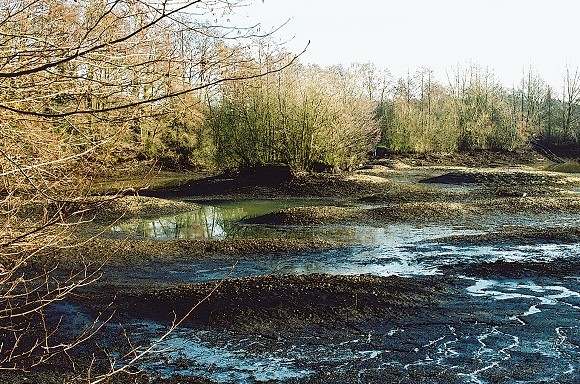
A complete gravel masterclass
A simple but packed-with-‘Below-The-Surface’-knowledge guide to fishing on gravel
Angling Bushcraft No.1: How to measure the width of a gravel bar
To measure the length of a feature, be it a plateaux or bar, you simply use sky-markers on the far bank, whether that’s trees, telegraph poles or buildings. For the width (the backside to the nearside) of the feature it comes down to bank space. If you’re limited on space you can mark your main line with tape or Gardner’s Mark-It once you come into contact with the feature, then pull back until you come off the nearside and mark again and then take a reading of the distance.
If bankside space isn’t an issue, then stand at the water’s edge as you normally would but once you feel the first taps of the feature start walking back with the rod held at the same angle and position and count the number of footsteps you take. By doing it this way it will give you a proper visual of how wide the feature is because you’ve almost drawn it out on the bank.
Angling Bushcraft No.2: The truths about gravel
So: when you get that ‘tap, tap, tap’ on your marker rod, what are your first automatic thoughts about the lakebed? The thought of a lovely and clean gravel feature that the fish have cleaned due to frequent feeding on the spot automatically spring to mind, but to be honest, this couldn’t be further from the truth. Proof from our award-winning ‘Below The Surface’ series shows that what we think is clean gravel actually isn’t. It’s often covered in a light layer of silt along with low-lying or patchy weed.
Well, why do we still get the ‘tap, tap, tap’ if it isn’t clean? It’s because the heavy leads on the marker often sink straight through the light layer of fine silt and weed and make contact with the gravel underneath, automatically making you think that you’re on clean gravel. As a rule of thumb, unless you can see that it’s clean gravel in the edge, automatically think that is it never clean and it’s covered in a light layer of silt and weed. This means the rigs we often use on gravel could be a lot better and more effective; we’ll look at these later.
Angling Bushcraft No.3: Baiting on gravel
Often enough, gravel is a totally raised feature – sometimes it’s raised a few feet and other times it can be a lot further. Either way, baiting is incredibly important and if you want everything to be where it counts then you’ll need to bait differently when fishing over a silty, softer bottom.
Chopped and mis-shaped baits: With the gravel feature being raised, if you use a standard round bait you will often find it’ll roll down the side of the hump and end up at the bottom of the shelf away from your rig – just ask Lewis Porter or Shaun Harrison who both witnessed that first hand during their Below The Surface “tests”.
One way to combat this is to fish a bait that isn’t round. Particles and pellets are automatically a bait type that will stay put and won’t move as easily but have you ever considered fishing chopped or halved boilies? Giving them flat sides will not only make them stay where required but it will also leak the attractors into the water a lot quicker.
Introducing your chops: When it comes to introducing your chops, then there is no better way than with a Spomb. If you use the line clip on your reel and accurately hit the clip and far bank marker over and over again, then you can achieve an incredibly tight and accurate bed of bait. The most important thing is to be accurate as the gravel spots are often very small, go off the spot and you’re often baiting up down the bottom of the shelf; a considerable distance away from your baited rig!




